CARUS

Who Write Musical History
Hundred Years of
Orchestral Splendor & Operatic Melodies
Church Music from Italy


Who Write Musical History
Hundred Years of
Orchestral Splendor & Operatic Melodies
Church Music from Italy
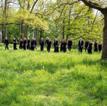







IMPRINT
Editor
Rencontre – Begegnung
Arrangements of songs by Fauré – Gounod – Saint-Saëns – Hensel Denis Rouger has arranged numerous songs by the great French composer Fauré and others for his figure humaine chamber choir. The wellknown art songs, originally composed for solo voice and piano, can now be enjoyed anew in this sensitive choral interpretation. The sheet music is available from Carus.
Jan Dismas Zelenka: Missa Gratias agimus tibi
It is the story of a renaissance. Sorely neglected for many years, the music of Jan Dismas Zelenka has in recent decades regained its place on the concert stage. Having discovered Zelenka early in his career, Frieder Bernius has been a regular interpreter of his music. This recording with the Kammerchor Stuttgart features the festive Missa Gratias agimus tibi of 1730.
Johann Sebastian Bach: Friede auf Erden
Reconstructed cantatas BWV 197.1, BWV 80.1, BWV 190.1
Johann Sebastian Bach’s uncomplete transmitted works have a very special appeal. The music seems close enough to touch and yet remains mysterious. What might these pieces have sounded like? Carus has recently published reconstructions of three cantatas, recorded here by the Vocalensemble Rastatt under the direction of Holger Speck.
Schönberg: Friede auf Erden – Strauss & Mahler: Im Abendrot. Transcriptions by Clytus Gottwald
This recording by the Kammerchor Stuttgart features ten songs by Richard Strauss in transcriptions by Clytus Gottwald. These are complemented by a stunning transcription of the “Adagietto” from Gustav Mahler’s 5th Symphony. Listeners are also treated to Friede auf Erden (Peace on Earth) by Arnold Schoenberg, one of the few choral works of the Second Viennese School.
Louis Spohr: Des Heilands letzte Stunden (The Savior’s Last Hours / Calvary) Passion Oratorio WoO 62
This great Passion oratorio is a jewel of early 19th-century sacred choral music, which Frieder Bernius and his Kammerchor Stuttgart, together with the Deutsche Kammerphilharmonie Bremen, have made accessible to us once again.


Carus-Verlag GmbH & Co. KG
Please find the magazine online: www.carus-verlag.com/en/spotlight/carus-magazine Follow us!
Sielminger Str. 51, 70771 Leinfelden-Echterdingen, Germany
Phone: +49 (0)711 797 330-0
info@carus-verlag.com / www.carus-verlag.com
Carus 99.002/68, 2.2025
Prices are subject to change. Errors excepted.
± Minimum order quantity 20 copies. From 40 copies 10%, from 60 copies 20% discount. Please note the different quantity scales for our digital editions.
Editorial staff: Miriam Wolf, Marion Beyer, Iris Pfeiffer
Translation: Derek Henderson, Janet Gilbert
Layout + Cover: Nadine Kristen, Alicia Meier
Photos: Nadine Kristen (Cover, 15), Sven Cichowicz (3, 9, 10, 22, 23), Oliver Killig (4), Elza Zherebchuk (4), Guido Johannes Joerg (21), Katharina Weber (13), Dominik Schneider (25).
I am delighted to present to you in this magazine our latest releases, as well as selected titles from our extensive catalog of choral music.
You’re probably familiar with the composers Fanny Hensel, Clara Schumann, Barbara Strozzi and Ethel Smyth. But have you ever heard of Phoebe Knapp, Elfrida Andrée and Ika Peyron? Our new choral collection, Choral Music Composed by Women, brings together choral works by forty-five female composers, all born between 1540 and 2000. In their article, my Carus colleagues Dr. Barbara Mohn and Dr. Reiner Leister invite you to explore this fascinating repertoire!
Italy is known for its rich opera tradition. It is no wonder that Italian choral and orchestral works often remind us of famous operatic compositions by Verdi, Puccini or Bellini. Italian expert Guido Johannes Joerg takes you with him to 19thcentury Italy and explains why this is the case. We now have a “hit” like this in our program, in Pietro Mascagni’s Messa di Gloria, which at certain points sounds like Verdi’s Requiem, but is much less demanding for the choir. A discovery that is now available in a reliable Carus Urtext edition.

In addition, Carus continues to expand its catalog with great works for choir and orchestra. You can look forward to the forthcoming publication of Dvořák’s Requiem. Incidentally, for many major choral symphonic works, Carus offers not only the original version but also an arrangement with a significantly smaller orchestra. This makes these classic large-scale works accessible to smaller choirs – and a smaller-scale performance benefits the budget. In the article ARRANGED FOR CHOIR, we present our “Great Choral Works in Small Scorings”, along with other exciting series of arrangements in our program.
I hope you find some inspiration for your forthcoming choral concerts. We look forward to being your partner in excellence for your choral projects.
Dr. Johannes Graulich Publisher & Managing Shareholder

Choir experts regularly comb through the extensive Carus sheet music program (over 45,000 works!) and compile repertoire highlights for you: according to content, genre or instrumentation-specific aspects. For example, easy-to-rehearse yet effective movements. Or thematic collections – e.g. on the theme of peace, morning mood or love. Many of the recommendations are also available digitally in inexpensive separate editions.
Puccini’s Preludio a Orchestra, one of the composer’s earliest surviving works, is now at last available in an authentic, complete version! For a long time this piece was known only from a single fragmentary source with a passage missing from the middle section. But a few years ago a previously unknown manuscript was discovered in the Puccini Archive in Torre del Lago, and this was ultimately recognized as the complete autograph score of the Preludio a Orchestra. So now Puccini’s Opus 1 can be performed in its original form again! (Carus 56.002/50).
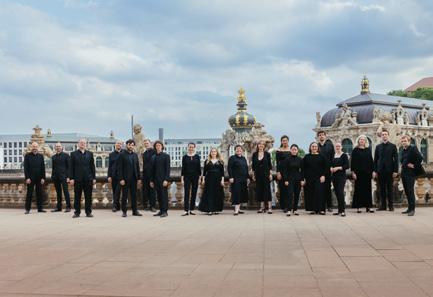
Elisabeth Fußeder has been awarded first prize in the composers competition Nocturne, an initiative of Voktett Hannover together with chor.com and Carus-Verlag. The composer, who was born in Munich in 2000 and has already published several works with Carus, is currently studying at the Musikhochschule in Freiburg. We congratulate her and look forward to seeing more of her work in the future!
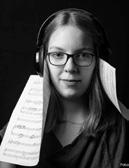

The ChoralTIES Project is one of the supporters of the new Conductor’s Coach app from Carus. The Project, coordinated by the European Choral Association ECA and co-financed by the EU, offers choral conductors further training sessions at international and European level. These can be found on the ECA YouTube channel, along with other webinars.
Carus editor and Rheinberger expert Barbara Mohn has compiled which of Rheinberger’s numerous sacred choral works are suitable for which time of the church year. You can find the overview here: www.carus-verlag.com/en/rheinberger-church-year/
It’s time to celebrate! The Dresdner Kammerchor, founded by Hans-Christoph Rademann in 1985, produced a world premiere with its historic recording of the complete works of Heinrich Schütz, published by Carus (with others). Now for its fortieth anniversary the choir is recording Georg Philipp Telemann’s St. Luke Passion (Carus 83.542).
Giovanni Pierluigi da Palestrina (most likely 1525 – 1594)
2025: 500th Birthday
St. John Passion BWV 245.2 First performance on Good Friday 30.03.1725 2025: 300th Anniversary
Maurice Ravel (1875 – 1937) 2025: 150th Birthday
Clytus Gottwald (1925 – 2023) 2025: 100th Birthday
Carl Maria von Weber (1786 – 1826) 2026: 200th Anniversary of death
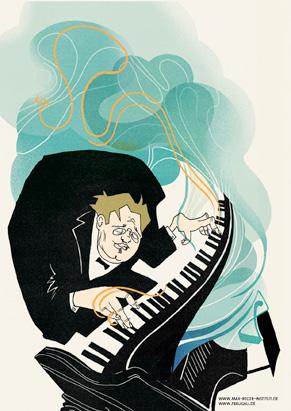
March 18 – 22, 2025
ACDA National Conference, Dallas, Texas, USA
May 28 –June 1, 2025
European Youth Choir Festival, Basel, Switzerland
June 6 – 10, 2025
International Chamber Choir Competition, Marktoberdorf, Germany
October 27 – 31, 2025 9th Stuttgarter Choratelier Carus-Verlag
Leinfelden-Echterdingen, Germany
The Nicene Creed, the Christian profession of faith, is central to most mass compositions. 1700 years ago, in the course of the Council of Nicaea (325), the process of agreeing on a creed was initiated. Carus is honoring this special anniversary with a commission to six composers from around the world. Dominick DiOrio, Keiko Harada, Grayston (Bill) Ives, Marten Jansson, Martín Palmeri and Victoria Vita Poleva have each brought their own unique style to this multifaceted piece that represents all the major Christian religions equally. A symbolic work standing for the unity, diversity and solidarity of the Christian community! Read more about this topic on p. 24.
At the Max Reger Institute in Karlsruhe Almut Ochsmann (text) and Eva Gau (illustrations) have created a graphic novel about the life and work of Max Reger, supported by a large-scale fundraising campaign. Carus was happy to participate and is delighted with the great graphics.

In 2017 the renowned magazine Gramophone published its list of the fifty best conductors of all time. None of them were women.
The same list in 2023: there were eight female conductors among the top fifty.

It’s a similar state of affairs with composers: the top 20 most frequently performed contemporary works in 2019 were all written by men. In 2022, nine women made it on the list.
n the world of pop music the situation is completely different. Here, women are at the forefront and they show everybody how it’s done. As Beyoncé proclaims, “Who run the world? Girls!” Today the biggest pop stars in the world are women. Beyoncé, of course, and above all Taylor Swift, Adele, Rihanna, Miley Cyrus and, in Germany, Shirin David and Helene Fischer. They don’t just inspire the masses musically with their songs; they also influence politics and society. Taylor Swift supported Joe Biden in the 2020 US election. And despite – or because of – the resulting furious reaction from the Trump camp, she has become even more popular and influential since then. Beyoncé is considered an icon of feminism and uses her influence to make Black culture visible and empower Black women. And she can make a difference.
Why is it so different in the world of classical music and socalled high culture? Why is recognition so much slower here? Even female composers with extraordinary musical talent, assertiveness and visionary power are far less well known and far less often performed. There is only one positive aspect to this state of play, and that is that there’s still so much to discover! Jewels of compositions that need to be unearthed; female composers who are definitely worth exploring; works that should be a permanent part of the concert repertoire. The life stories of the composers in the choral collection Choral Music Composed by Women often sound just as unusual as the music itself.
She smashed windows with the suffragettes and argued with Johannes Brahms because he didn’t think much of women composers: we’re talking about Ethel Smyth (1858 – 1944), of course. This British woman began her musical career with a hunger strike. It was the only way she was able to persuade her family to allow her to study composition in Leipzig from 1877.
She composed choral works, symphonies, chamber music and operas. Her best-known work March of the Women (“Shout, shout, up with your song!”) became the anthem of the early English women’s rights movement. The choral setting (easy level of difficulty) can be found in Choral Music Composed by Women. Probably the most famous performance of this piece took place in 1912 in Holloway women’s prison in London, when it was sung by imprisoned women’s rights activists. The English conductor Thomas Beecham reports how the women sang in the prison yard while Smyth beat time with a toothbrush from her cell window.
Smyth received recognition and was later ennobled as a Dame of the British Empire. However after her death in 1944, she and her works were quickly forgotten. For a long time she was overshadowed by her male colleagues. It is only recently that her compositions have been rediscovered. Her determination to achieve what she set out to do and not to listen to the naysayers and pessimists is also exemplary for today’s young musicians.
Florence B. Price’s (1887 – 1953) breakthrough as a composer came with her Symphony No. 1. This award-winning work was premiered in 1933 for the World’s Fair in Chicago. The critics were stunned, as they had not expected this from a woman –and an African-American woman at that. Nevertheless, during her lifetime Florence B. Price was not awarded a place in the canon of American music history. Discrimination and prejudice in classical music were far too strong. She herself had no illusions: “I have two handicaps: I am a woman, and I have black blood in my veins,” she wrote to the chief conductor of the Boston Symphony Orchestra in 1943 in an attempt to persuade him to perform her works. Without success.
The disconnect between black origins and white musical tradition was to motivate Florence Price up to her death in 1953. Her vision of uniting the music of slaves with Western music inspired the development of her own characteristic style. Pieces such as Fantasie nègre or At the Cotton Gin bear witness to this. She combined traditional orchestral instrumentation with African rhythm instruments. In addition to employing melodies from African-American folklore in her works, she also used the syncopated rhythms of “Juba” – that is, a dance which was performed by slaves who circumvented the ban on drums by stomping, clapping and body percussion. Praise the Lord (also in the new choral collection from Carus) is reminiscent of the spiritual tradition with its distinctive calls. Florence Price could only dream that one day renowned ensembles would sing and play her music and that she would be celebrated all over the world.
Smyth and Price lived in the nineteenth and twentieth centuries, times of great social upheaval. But how did women composers fare in earlier centuries, in different social and societal circumstances?
The search for clues takes us back to the seventeenth century, specifically to northern Italy around 1600. The first printed music from Venice, the music printing and publishing center of that era, reveals the names and works of a whole series of women who were highly respected musicians and composers in their time: Maddalena Casulana (c. 1544 – c. 1590), Vittoria Aleotti (1575 – after 1620), Francesca Caccini (1587 –c. 1640), Caterina Assandra (c. 1590 – 1618), Chiara Margarite Cozzolani (1602 – 1678), Barbara Strozzi (1619 – 1677), Isabella Leonarda (1620 – 1704) and others.
Some created their works in the one environment where they could develop their compositional skills in uninterrupted safety: in a monastery. Vittoria Aleotti (1575 – after 1620) grew up around the d’Este court in Ferrara as the daughter of a court architect and stage designer. As a child she already excelled at the harpsichord, just like her only slightly younger colleague Frescobaldi. At the age of 14, Vittoria Aleotti entered the San Vito convent: its reputation as a place of education and music extended far beyond the city. Under her monastic name Raffaela, Aleotti subsequently took the role of head of music in the convent, and later became the prioress. She had twenty-three female musicians, both instrumentalists and singers, at her disposal. In 1593, she had a volume of sacred motets for five to ten voices printed. That same year her father had a volume of secular madrigals published for her in Venice: this included the enchanting madrigal Hor che la vaga Aurora about the dawn and Apollo’s music, which is now included in the choral collection Choral Music Composed by Women. The convent gave Aleotti the space to develop her talent and gain a reputation as a composer far beyond its walls.
Maddalena Casulana c. 1544
Vittoria Aleotti 1575
Francesca Caccini 1587
Caterina Assandra c. 1590
Chiara Margarite Cozzolani 1602
Barbara Strozzi 1619
Isabella Leonarda 1620
Louise Farrenc 1804
Fanny Hensel 1805
Ann Mounsey Bartholomew 1811
Josephine Lang 1815
Clara Schumann 1819
Elise Lavater 1820
Phoebe Knapp 1839
Emily B. Tallmadge 1840
Elfrida Andrée1841
Florence Ashton Marshall 1843
Ika Peyron 1845
Agathe Backer Grøndahl 1847
Luise Adolpha Le Beau 1850
Mel Bonis 1858
Ethel Smyth 1858
Alicia Adélaide Needham 1863

Alice Tegnér 1864


1864 Miina Härma
1867 Margaret Ruthven Lang
1867 Amy Beach
1876 Hedda Wagner
1887 Florence B. Price
1914 Felicitas Kukuck
1932 Pauline Oliveros
1950 Vivienne Olive
1955 Eleanor Daley
1955 Carole Nelson
1957 Karin Rehnqvist
1958 Hanna Havrylets
1961 Dorothea Hofmann
1967 Daphna Rosenberg
1979 Anna Tabbush
1980 Abbie Betinis
1981 Julija Ovseičiuk
1983 Reena Esmail
1990 Julieta Dellarole
1995 Lucia Birzer
1999 Evita Rudžionyte
2000 Elisabeth Fußeder
Lucia Birzer Afterwards
Award winning at females featured competition (en) 6 min / 4 (medium to difficult)
• Setting of a poem by a well-known American female poet
• Dramatically effective structure
• Current topic “Our Voice for Our Planet”
Carus 9.286/50 (Solo SMsA, Coro SSMsMsAA) or Carus 9.286/00 (Soli SABar, Coro SSAATTBB)
full score ± 4,80 € ( 4,30 €)
Elisabeth Fußeder Sofdu Unga
Award Winning at chor.com composers competition Nocturne (Icelandic/en)
Version I: Coro SSAATTBB
Version II: Coro SATB, speaker, speaking choir
7 min / 5 (difficult)
• With its intensity and sensitive treatment of the lullaby text, Sofðu unga ástin mín is a captivating work. In addition to sung words and sounds, Fußeder uses other vocal techniques such as speaking, whispering, audible breathing, whistling and shouting.
Carus 9.310
Julija Ovseičiuk Cantate Domino
recommended by Jan Schumacher (lat)
Coro SATB (divisi) / 2 min / 3 (medium)
• Immerse yourself in the fascinating world of Lithuanian choral music!
Carus 7.452
full score ± 2,45 € ( 2,20 €)
Monika Sokaité In paradisum
recommended by Jan Schumacher (lat)
Coro SATB (divisi) / 3 min / 3 (medium)
• The unique Baltic soundscape is impressively captured by this short work.
Carus 7.457
full score ± 2,45 € ( 2,20 €)
More female composers:

Isabella Leonarda chose a similar path in life. Born the daughter of a nobleman, she entered the Ursuline convent in Novara at the age of 16 and trained as a musician there. She published twenty collections of her own works, including instrumental pieces, which are considered to be the earliest printed instrumental compositions by a woman. She dedicated her works not only to high-ranking people such as Emperor Leopold I, but also to the Mother of God, as evidenced by the Canon coronato a 3 in the choral collection, with its sung dedication.
Maddalena Casulana and Barbara Strozzi, on the other hand, managed to lead successful careers as composers outside the monastery walls. Casulana, a celebrated singer and lutenist, is even considered to be the first woman to publish her own works. Barbara Strozzi achieved the feat of earning her living as an illegitimate daughter and later an unmarried mother of four children in Venice by singing, playing music and composing and publishing eight music collections. Both were known well beyond the borders of Italy.

Whether as successful musicians, patrons, clients, mediators, teachers or choirmasters, women have always shaped musical life. Yet as composers, they usually only had a small voice in the music scene of their time, and their works were rarely printed.
It will be interesting to see the lists of top composers, conductors, musicians in ten years’ time. What will the rankings look like? Perhaps the Mozart of the future might even be a woman!
Barbara Mohn and Reiner Leister



Dr. Barbara Mohn has been an editor at Carus-Verlag since 1994; from 2000 to 2008 she was head of the Editorial Institute of the Rheinberger Complete Edition.


Carus 2.251
This choral collection spotlights female composers from Europe, North and South America and Israel, ranging from the Renaissance period to young composers of the present day. Many were pioneers of their time, who fought against strong opposition for acceptance as professional composers. You will discover beautiful sacred and secular works in a variety of styles from psalm settings, madrigals and romantic choral songs to experimental pieces, spirituals, canons and simple songs for choral events and community singing as well as contemporary music for chamber choirs.
• 45 women composers born between 1540 and 2000
• 47 sacred and secular compositions for SATB choir, some works are divisi and some with organ/piano accompaniment
• Most pieces of easy to moderate difficulty
• Featuring commissioned works and pieces published for the first time
• Most texts in English or German
• Separate editions available in print and digital form
Choral collection, 120 pages, 24,00 € from 20 copies 19,20 € from 40 copies 18,00 €
Dr. Reiner Leister is a musicologist and was a choral conductor in Aachen, Bornheim and Siegburg.
As Key Account Manager at Carus-Verlag, he has been looking after choir customers worldwide since 2019.
Cooperation partner:
Insights, audio samples and much more: www.carus-verlag.com/225100
Lasst uns sorgen, lasst uns wachen BWV 213
(Let us watch him, let us guard him)
Johann Sebastian Bach:
Lasst uns sorgen, lasst uns wachen
Herkules auf dem Scheideweg (Dramma per musica)
BWV 213 (dt / en) ed. Uwe Wolf
Carus 31.213 full score 44,00 € (also ), vocal score 14,00 € (also ), choral score ± 4,95 €, complete orchestral parts 130,00 € (also )
There’s a lot to discover when you start exploring the origins of the famous parodies in the Christmas Oratorio. We all know the text of the opening chorus to the piece written to celebrate the birthday (in December 1733) of the Saxon Electoress Maria Josepha, which explains the timpani blasts that open the Christmas Oratorio (1734): “Tönet, ihr Pauken! Erschallet, Trompeten” (“Sound, all ye drums now! Resound, all ye trumpets”). And every year we comprehend Bach’s stroke of genius in this opening, here entirely detached from the – mundane – connection to the original text. The second important “quarry” which the composer mined for the Christmas Oratorio was the cantata “Herkules auf dem Scheidewege” (“Hercules at the Crossroads”) (which is in fact the title printed in the text book; Bach only wrote “Dramma per musica” – a not uncommon name for an opera at this time).
Unlike Tönet, ihr Pauken (BWV 214), Lasst uns sorgen, lasst uns wachen (BWV 213) is not only an homage but relates the well-known tale of the young Hercules who, reaching a fork in the road, has to choose between the temptations of Vice and the promises of Virtue – and, naturally, chooses the latter. Over the centuries there have been many pictorial representations of this mythological story, which has also been turned into an opera seria (Alcide al bivio, opera libretto by Metastasio, set to music by Hasse and Paisiello, among others). The middle section of Bach’s cantata can be viewed as a mini-Baroque opera, in which – as you might expect – Virtue and Vice make an appearance alongside Hercules. Finally, Mercury announces Hercules’s choice, and the Echo familiar from the Christmas Oratorio also turns up here to advise the hero in his difficult decision. The actual occasion of the performance
– the birthday of the crown prince – is only addressed in the the last recitative and the two outer choruses. The youthful Hercules represents the young prince, who, of course, has also long since chosen the path of Virtue.
Unlike the audience that gathered in Zimmermann’s coffee garden just outside Leipzig’s city walls in the late summer of 1733 to enjoy the birthday music (and possibly enjoy a staged performance?), we can no longer listen to the cantata with an open mind: most of this music is already so familiar to us! But we are always fascinated and dumbfounded to realize just how different these scores – so wonderfully suited to the texts of the Christmas Oratorio – were in their original form; for example when Hercules rebuffs Vice with “Ich will dich nicht hören, ich will dich nicht wissen” (“I will not regard thee, but wholly discard thee” (Christmas Oratorio: “Bereite dich Zion mit zärtlichen Trieben” – “Prepare thyself, Zion, with tender emotion”) or declaims “ich will nicht, ich mag nicht” (“I will not, I may not”. Christmas Oratorio: “den Schönsten, den Liebsten” –“the Fairest, the Dearest“). There is a great deal to discover in this “mini opera”, whose timeless plot makes it one of the most attractive of Bach’s secular cantatas. And the framing choruses are so powerful that we can even tolerate the “blühe, holder Friederich” (“praise thy budding majesty”) at the end (even just changing “Friedrich” to “Jugend” – “youth” – will generalize the meaning of the closing chorus – but I’m sure you will come up with something even better!).
Uwe Wolf

Dr. Uwe Wolf has been the Chief Editor at Carus-Verlag, Stuttgart since 2011. Previously, he was involved in Bach research for more than twenty years.
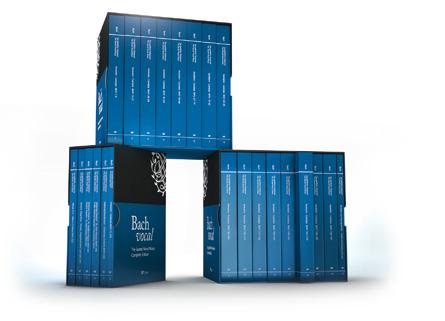
B minor Mass
The Sacred Vocal Music Complete Edition in 23 volumes edited by Ulrich Leisinger and Uwe Wolf in collaboration with the Bach Archive Leipzig Study scores in a reader-friendly format, also suitable for conducting, in 3 high-quality slip cases
Carus 31.500
Since the founding of CarusVerlag, Johann Sebastian Bach’s music has played an important role. We have published all of Bach’s sacred vocal music in modern Urtext editions together with performance material. The Complete Edition of all scores in three high-quality slip cases is also available. The series will be continued with editions of selected secular cantatas.
BWV 232.4 (lat)
Carus 31.232, full score clothbound with DVD or paperback (also ), vocal score (also and also XL), choral score±, complete orchestral parts (also )
The clothbound score presents all the relevant sources to highly revealing effect in a DVD to provide a whole new access to Bach’s fascinating autograph.
Mass in F major Lutheran Mass BWV3 233.2 (lat)
Carus 31.233, full score (also ), vocal score (also ), choral score±, complete orchestral parts (also )
In addition to the B minor Mass, Bach has composed four other, smaller masses, the so-called Lutheran or Kyrie-Gloria masses. Despite their musical excellence, they are often overshadowed by Bach’s other church compositions. These masses consist largely of so-called parodies, with Bach taking most of the original music from his cantatas and reworking it in his usual fashion to suit the context of the new piece.
Mass in G major
Lutheran Mass BWV3 236 (lat)
Carus 31.236, full score (also ), vocal score (also ), choral score± , complete orchestral parts (also )
Bach vocal
The Complete Edition

Stuttgart Bach Editions
Urtext for historically informed performance
Edited in collaboration with the Leipzig Bach Archive
Musicologically reliable editions for the practical pursuit of music, taking into account the most current state of Bach research
Informative forewords on the work’s history, reception, and performance practice and Critical Reports
Systematic revision of older editions – both music and text sections – where there have been new discoveries about the sources or from historically-informed performance practice
Complete performance material: full score, vocal score, choral score, and orchestral parts – also
Innovative practice aids (carus music, the choir coach) and and large print editions of the most important works


In 2025 we celebrate the 500th birthday of Giovanni Pierluigi da Palestrina. Adrian Büttemeier, a true Palestrina fan, has put together some program suggestions for your choir.
For me, Palestrina’s music is like a balm for the senses and the soul. Regardless of whether I’m singing, playing or conducting, a few clean chords or an intensely shaped line can touch me, sweep me away and bring me a unique form of happiness. I’m always impressed by the ingenious combination of tonal beauty, spiritual depth and musical/textual clarity in his work. One of the greatest composers of the Western canon has lost none of his concentrated and sonorous power over the last five centuries – reason enough to celebrate his 500th birthday in style!
The Missa Papae Marcelli (Carus 27.906), in particular, is one of the best-known and most important works of the Renaissance period. And, although it probably did not “save” church music, this Mass can certainly be regarded as a pinnacle of Catholic sacred music in the 16th century. Palestrina’s influence on church music extends far beyond his lifetime: Johann Sebastian Bach made close study of his work (Carus 35.501 and Carus 35.301) while composers such as Felix Mendelssohn Bartholdy and Anton Bruckner also drew inspiration from him.
At a time when the role of liturgical music was being redefined, Palestrina’s Mass can be said to reconcile the demands of theology and sacred music. Reeling under the impact of the Reformation, this was a period of crisis for the Catholic Church, leading to a thoroughgoing reorganization of church practice. In my work for the “Choir & Future Unit” of the choral association of the Protestant Church in Germany (EKD), I often feel that the deliberations of the Council of Trent (1545 – 1563) on the significance of sacred music and its role in the church are as relevant as ever. Interestingly, this especially applies to activities at the local and regional levels, and not necessarily at higher decision-making levels.
One of our most pleasing tasks is, following Palestrina’s example, to repeatedly contrast these mundane discussions with heavenly music. The Missa Papae Marcelli is ideally suited for this; reputedly, it was even able to calm and move the irate
cardinals at the Council of Trent. With a performance time of around twenty-five minutes, the Mass can take pride of place in its most dignified setting, namely during church service. Alternatively, Carus also offers all sections of the Mass as separate editions. For example, a performance of just the Kyrie and Gloria takes about ten minutes. Also interesting liturgically (as well as in non-sacred contexts) is a performance of the three Kyrie sections interrupted by short prayers (Carus 27.906).
For truly musical services, the Mass can be beautifully combined with pieces by Palestrina’s contemporaries such as Felice Anerio, Giovanni Gabrieli, Carlo Gesualdo or Claudio Monteverdi. Depending on the church season and your own preference, the Carus catalog offers numerous suitable motets by all four composers. Personally, I find the two Cantate Domino settings by Gabrieli (from “Symphoniae Sacrae I” 1597, Carus 1.521) and Monteverdi (from the Bianchi prints of 1620, Carus 3.315/50) particularly stunning. These can be charmingly juxtaposed and combined with the complete or abridged Palestrina Mass.
Alternatively, two other jubilarians have written wonderful music for use in church, namely Adam Gumpelzhaimer (400th anniversary of his death in 2025) and Andreas Hammerschmidt (350th anniversary of his death in 2025). Hammerschmidt’s Musikalische Andachten or Fest- und Zeit-Andachten are particularly suitable for performance because, as with Palestrina, they are scored for six voices. Incidentally, those who shy away from the six-part SATTBB scoring of the Missa Papae Marcelli can of course also use low alto voices for the first tenor. The Ten Motets by Andreas Hammerschmidt in very different arrangements with and without instruments (Carus 4.006) are also a highly recommended collection from Carus. In addition, there are numerous separate editions with four-part alternatives, motets with and without continuo as well as with additional instruments.
Alongside church services, I also enjoy creating concert programs based on a Mass setting. Either I place this at the heart of the
program, arranging other works around it, or I break up the Mass and insert matching or contrasting works between the individual sections. In concert programs, I also find it interesting to juxtapose or interweave two different Mass settings, for example Johann Michael Haydn’s (1737 – 1806) Missa Sanctae Crucis, MH 56, from 1762, or Franz Liszt’s (1811 – 1886) Missa choralis S 10 from 1865 (available as Carus 50.312 and Carus 40.647, respectively).
Palestrina can also be partnered with contemporary jubilarians such as Arvo Pärt, who celebrates his 90th birthday in 2025. Pärt’s Berlin Mass (1990) for choir and string orchestra or organ as well as his solo organ Mass Annum per annum (1980) would make an extremely interesting one-hour concert program combined with the Missa Papae Marcelli. Alternatively, the 110th birthday of Knut Nystedt provides the perfect occasion to program his Missa brevis, op. 102, (Carus 27.054) from 1985, which also brings the opportunity to feature other Scandinavian choral works in the program.

Like Palestrina, Josef Gabriel Rheinberger (1839 – 1901) was caught up in a great musical controversy when adherents of the Cecilian Movement proposed returning to the stylistic roots of Palestrina’s music – somewhat paradoxically, if we remember that this music was in fact revolutionary in its day. The ways in which Rheinberger fused Palestrina’s legacy with the harmonic and tonal means of his time can be illustrated by a concert program featuring the Missa Papae Marcelli and the Missa in honorem Sanctissimae Trinitatis in F, op. 117, from 1880 or the Missa St. Crucis in G, op. 151, from 1882 (Carus 50.117 and Carus 50.151). The Rheinberger Complete Edition published by Carus offers many other options to enliven your concert program.
Finally, it seems to me that individual parts of the Mass can also become the subject of an entire concert program: How about a Kyrie-themed concert that combines various Kyrie settings with other works involving an entreaty (e.g. for peace, climate protection or justice)? Or a Gloria-themed concert with various Gloria settings and works whose titles begin with “Cantate”, “Jubilate” or “Laudate”? Here I’ve sketched out a potential program and would be delighted if it provides you with some inspiration. In any case, all choirs can learn something from Palestrina’s vocally-guided lines and beautiful harmonies. Time and again, I have seen how other choral pieces at a concert are illuminated when something by Palestrina is sung in parallel.
Your creativity really knows no bounds in this Palestrina anniversary year. The Missa Papae Marcelli is a wonderful starting point for liturgical and concert formats of very different flavors.
Adrian Büttemeier
Giovanni Pierluigi da Palestrina Missa Papae Marcelli (lat) ed. Francesco Saggio Carus 27.906 full score 24,00 €, choral score ± 8,00 € ( 7,20 €)
The individual parts of the mass are also available in separate editions, transposed down a tone (B flat) / Carus 27.906/10 – /70), offering choirs who are not (yet) familiar with the period a good opportunity to explore Palestrina’s style.
Adrian Büttemeier is music director at Berlin Cathedral in the heart of the German capital. He also works as head of the “Choir & Future Unit” of the choral association of the Protestant Church in Germany (EKD).

by Adrian Büttemeier
Andreas Hammerschmidt (1611 – 1675)
MONTEVERDI

3’ Jauchzet dem Herrn, alle Welt aus Musikalische Andachten V
Giovanni Pierluigi da Palestrina (1525 – 1594)
4’ Gloria from der Missa Papae Marcelli
Andreas Hammerschmidt (1611 – 1675)
3’ Singet dem Herrn ein neues Lied from Musikalische Andachten I
Giovanni Pierluigi da Palestrina (1525 – 1594)
3’ Gloria from Missa Aeterna Christi munera
Claudio Monteverdi (1567 – 1643)
3’ Cantate Domino SV 293 from Libro primo de Motetti
Giovanni Pierluigi da Palestrina (1525 – 1594)
3’ Gloria from Missa brevis
Giovanni Gabrieli (1554 – 1612)
3’ Cantate Domino from Symphoniae Sacrae I
Johann Michael Haydn (1737 – 1806)
3’ Gloria from Missa Sanctae Crucis MH 56
Andreas Hammerschmidt (1611 – 1675)
6’ Freude, Freude, große Freude from Musikalische Andachten V
Franz Liszt (1811 – 1886)
5’ Gloria from Missa choralis S 10
Josef Gabriel Rheinberger (1839 – 1901)
2’ Preis und Anbetung WoO 24
3’ Gloria from Missa St. Crucis in G op. 151
2’ Laudate Dominum from Vier Motetten op. 133, 3
3’ Gloria from Missa brevis in F op. 117
2’ Frohlocket, ihr Gerechten from Fünf Motetten op. 40,5
Arvo Pärt (* 1935)
3’ Gloria from Missa syllabica (1977)
Knut Nystedt (1915 – 2014)
3’ Laudate (1990)
2’ Gloria from Missa brevis op. 102 (1984)
4’ Sing and rejoice (1983)
As an encore:
Knut Nystedt (1915 – 2014)
3’ Song of Praise (1974)


Claudio Monteverdi Madrigali e Motetti. Choral collection Monteverdi Carus 4.024, separate editions available
The choral collection is a compilation of 20 compositions: both secular madrigals and sacred motets. In addition, the collection also includes a number of famous madrigals to which one of Monteverdi’s contemporaries added Latin sacred texts soon after their publication.
Andreas Hammerschmidt Ten motets Carus 4.006, separate editions available
The edition of Hammerschmidt’s ten motets contains six works for the church year and four sacred concertos. These works are a rewarding addition to the repertoire, especially suited for performance in worship services and evening music.
Josef Gabriel Rheinberger Masses for mixed choir a cappella. Complete Edition, Vol. 2
Carus 50.202, separate editions available
This Volume contains Rheinberger’s Masses for mixed choir a cappella, in which the art of counterpoint, functional harmony, the strength of the formal design and the beauty of sound are united in a whole which is exemplary.

How to navigate the digital jungle: an illustrated guide
For lastminute planners
Still need a beautiful choral setting for tomorrow’s church service? Just order copies of our octavos and email them to your choir members. Or print them out at the parish office. Problem solved.
For those who live far away If postage costs more than the sheet music ... the digital alternative simply makes sense!
For those who have to deal with customs
You’ll never have to collect a package of sheet music from customs again – ordering digital sheet music simply makes your musical life less complicated.
For the forgetful Instrumentalists appreciate our range of readily available individual instrumental parts. Ordered ten minutes before the dress rehearsal, on the music stand two minutes later. Performance saved.
For happy singers
Our digital vocal scores of the great choral sym- phonic works make digital singers very happy – a new service from Carus!
For the stressed Creating your concert program is no longer a stressful burden in the runup to the concert, because we make our lyrics and intro- ductory notes available digitally. Researched, reliable, error-free and reasonably priced.
For the “digital onlys”
The solution for all choral directors who want to conduct from a tablet and leave analog behind: digital scores.
Do you recognize yourself? What else would you like to see in our digital offering? Email us at carus-magazin@carus-verlag.com. We’re looking forward to hearing your suggestions!
These texts were created by a human being and edited by at least five others. True, the quirky images are AI-generated (Microsoft Designer) – but hand on heart, the finishing touches were actually added by a human being.
For the budget conscious Smart shoppers make great savings with our digital sheet music edi- tions – especially when purchasing sheet music for large choirs!*
Of course, we understand that any musician can be forgetful, not just flutists – sorry for the generalization! And sincere thanks to every musician who uses our digital sheet music legally.
*Fun fact: Did you know that, according to studies by Carus, an astonishing number of choirs have exactly 20 singers?
A wide range for EVERY choir
Do you revel in choral music? Mendelssohn’s Elijah on the program, a large choir with a good balance of all the voices, a splendid orchestra –and a sold-out performance in a prestigious concert hall? A dream …. but in real life we often need to be a bit flexible. Carus produces various series that make it possible to perform large choral symphonic works with reduced, but no less exciting, instrumentation, so that even a small choir can enjoy the experience of presenting Elijah in concert! Carus also publishes arrangements of works which were not originally composed for choir, thus opening up wonderful repertoire to choirs for the first time. We invite you to browse through our wide-ranging catalog!




The conductor and Professor for choral conducting Denis Rouger has published numerous arrangements of French and German art songs originally composed for solo voice and piano with Carus. He carefully adapts the songs to suit the requirements and expressive possibilities offered by a larger ensemble, without losing any of the qualities of the original in the process. Rouger has recorded numerous arrangements with his figure humaine kammerchor – available on CD and all known streaming portals.
By the way: In April 2025, Carus will release a choral arrangement of Schumann’s famous song cycle Dichterliebe, arranged by by the Korean composer and conductor Cho HyeYoung. You can look forward to it!
Rencontre – Begegnung
Carus 83.537
Kennst du das Land
Carus 83.495 wo die Zitronen blühn
Carus 83.514
Clytus Gottwald’s sophisticated arrangements for chorus a cappella have very successfully established themselves in the choral repertoire all over the world. In his choral transcriptions, Gottwald applies the vocal compositional techniques of contemporary music to traditional compositions, using the highly differentiated sound to reveal the structures of these works.
Claude Debussy: Harmonie du soir from: Cinq Poèmes de Charles Baudelaire
Vocal transcriptions by Clytus Gottwald
Carus 9.169
Is your choir composed mainly of women with only a handful of men? Our SPLENDID SONORITY series offers popular choral works arranged for choirs with just one male voice part. But there’s no reduction or cutting; on the contrary, the usual SATB scoring with one soprano, one alto, one tenor and one bass part may, for example, be re-scored with two soprano voices, one alto and one bass voice for all the men (SSAB). The result is a new sound experience without compromising on quality!
Antonio Vivaldi: Gloria in D RV 589 (lat) Arranged for choir with one male voice arr. Christiane Rosiny
The Gloria in D, RV 589, is one of Vivaldi’s best-known sacred works. This arrangement is aimed at mixed ensembles with a limited number of male voices as well as youth choirs. While soprano and bass remain practically unchanged, the middle voices are arranged for soprano and alto. There are sensible suggestions for cuts should the size of the work prove to be an obstacle.

In the “Choir & Organ” series Carus offers works scored for large orchestra by various composers whose accompaniments have been arranged solely for organ. All that is required for a performance are two scores (one for the conductor and one for the organist), and either vocal scores or the lower-priced choral scores.
Marc-Antoine Charpentier:
Te Deum H 146 (lat)
Arrangement for soli, choir and organ
complete orchestral parts 74,00 €
Charpentier’s impressive setting of the Latin canticle Te Deum opens with a striking introductory fanfare. Andreas Gräsle has transferred the orchestral setting of this French Baroque masterpiece to the organ with great sensitivity for the changing instrumentations and timbres in the original score. Carus 21.032/45

Verdi’s Requiem with just 5 instead of 34 instrumentalists? With our arrangements in the “Great Choral Works in Small Scorings” series, it is easier and considerably more economical to perform the great choral works which every choir wants to sing. Our publications in this series are constantly being expanded.
NEW:
Antonín Dvořák: Te Deum op. 103 (lat)
Arrangement for chamber orchestra by Joachim Linckelmann
Carus 27.189/50 full score 59,00 € ( 53,10 €), vocal score 13,00 €, choral score ± 6,95 € complete orchestral parts for hire (also )
We know Italy as the birthplace of opera. Yet the foundations for this development were actually laid in the country’s churches. Verdi, Puccini, Donizetti – all were hugely influenced by the rich tradition of sacred music in their homeland. Join Guido Johannes Joerg as he explores this fascinating history!
IPietro Mascagni
Messa di Gloria in Fa maggiore (lat)
ed. Andreas Gies
Carus 27.904
full score 120,00 € ( 108,00 €), vocal score 29,00 € (also ), choral score ± 14,00 €, complete orchestral parts 207,00 €
Looking for some operatic drama for your church choir? Then the Messa di Gloria by Pietro Mascagni is just up your alley. Acclaimed throughout the world for his brilliant Cavalleria rusticana, Mascagni wrote this Mass at the same time as his famous oneact opera. Composed in a simple but effective style, the Mass features elegant, lyrical melodies sung by tenor and bass, supported by the choir in the more lively movements. The famous “Elevazione”, with its poignant violin solo, turns the work into a true masterpiece. With a moderate level of difficulty and requiring modest forces, the Messa di Gloria is suitable for both professional and amateur ensembles. This extremely beautiful work is also within the reach of youth choirs and orchestras.
t’s hard to deny that 19th-century Italian music written for the church or the opera house sounds quite similar. Just have a listen! The composers used the same thematic materials and applied the same techniques, attained through comprehensive training at either a church or state school. With a thorough knowledge of counterpoint and harmony, they were able to write an opera as easily as a Mass, and, of course, a secular or sacred choral work, a piano or organ piece, etc. Some techniques were reserved for one genre or another; for example, the strict imitative form of the fugue only appears in opera as short fugati.
While opera was clearly at the heart of music in Italy – it was the only way to achieve national renown – church music was certainly more present in the daily lives of the people. Most churches maintained choirs and orchestras, performing pieces written by professional church music directors, who also raised the next generation of musicians and composers. Indeed, it’s hard to find any famous 19th-century musician who didn’t begin their career in a church choir or banda (brass band). Many of the wealthier parishes were able to perform large-scale choral and orchestral works at church service and in concert, and not just on feast days. And those who were not up to the stresses and strains of the opera business could enjoy a more restful yet solid career as a church music director-composer. While many became respected musicians, composers or teachers, none achieved anything like the fame enjoyed by successful opera composers. In contrast to the situation in Germany at the time (which was still divided into many small princely states), there were few jobs to be had as a court music director.
Giacomo Puccini
Messa a 4 voci con orchestra (lat)
ed. Dieter Schickling
Carus 56.001
full score clothbound or paperback (also ), vocal score (also ), vocal score XL, choral score±, complete orchestral parts, / Carus Choir Coach (Audio only) practice aid
Puccini composed his Messa a 4 voci con orchestra (also known as Messa di Gloria) in 1878 – 1880. The musical quality, the energy, and the freshness of this youthful work led the composer to quote from his Mass in later operas, ensuring an ever-growing popularity for the work after its rediscovery in 1952. Thanks to an arrangement for chamber orchestra (Carus 56.001/50), it is possible to perform the work in smaller settings.
Messa op. 20 (lat)
ed. Pietro Zappalà
Carus 27.077
full score (also ), vocal score, complete orchestral parts for hire (also )
Amilcare Ponchielli scored his greatest success with the opera La Gioconda, a work which is still in the repertoire of the major opera houses. His sacred works were composed in his later years, when he was maestro di cappella at the Basilica di Santa Maria Maggiore in Bergamo. His Mass in A major (also known as “Messa per la notte di natale”) is captivating because of its flowing, singable melodies, rich harmonies, and warm tonal colors. The important role given to the chorus, with which the three male soloists interact closely, is striking.
Almost none of the leading 19th-century Italian (opera) composers came from a major city. In fact, the only significant cultural and artistic capitals at the time were Milan in the north and Naples in the south, while Rome, Venice, Florence and Bologna were still relative backwaters. Yet the residents of many of the country’s small towns could visit a cathedral for regular musical performances or an opera house for seasonal productions (stagione). Rossini got his start in Pesaro (later in Bologna), Donizetti in Bergamo, Bellini in Catania – all as choirboys; Verdi stood in for the village organist in Le Roncole near Busseto; Ponchielli came from a village in the province of Cremona (initially working as an organist), Catalani and Puccini from Lucca, and Mascagni from Livorno; born in Naples, Leoncavallo spent his childhood in a Calabrian village. Most attended a local music conservatory, with the exception of Ponchielli, who studied in Milan, and Bellini and Leoncavallo, who were trained in Naples. Verdi took private lessons after being rejected by the Milan Conservatory. Puccini and Mascagni completed their studies in Lucca and Livorno, respectively, before moving to Milan to continue their musical education under Ponchielli.
The conservatories of the day required graduating students to compose a (secular) cantata or a Mass, which was the origin, for example, of Catalani’s Messa (1872) and Puccini’s Messa a 4 voci (1880). Mascagni, who had broken off his studies in Milan in 1885, created his Messa di Gloria in 1888 while working as director of a music school in the small Apulian town of Cerignola. Its unusual scoring reflects the forces at the composer’s disposal. There are clear musical correspondences between the Mass and the ensuing work, the one-act opera Cavalleria rusticana, which in May 1889 won a competition run by the music publisher Edoardo Sonzogno, and whose premiere in Rome one year later was an unparalleled success. Some of Puccini’s famous opera melodies first appeared in his Messa a 4 voci (also known as the “Messa da Gloria”) as well as in some of his recently rediscovered piano pieces.

Do you already know our Carus recommendations? Here you will find repertoire according to different aspects of content, genre or instrumentation:
If any of these composers had not embarked on the physically and mentally challenging business of writing and producing operas, their names would hardly be familiar to us today, and no doubt their sacred music would also no longer be performed. Most of the successful opera composers of the time did not write for Milan’s La Scala or the Teatro San Carlo in Naples, but for provincial theaters. There were hordes of such enterprising musicians, most of whom are now forgotten. However, it was their works that helped fill each season’s program; the operas by the select group of star composers would never have been enough to satisfy the public’s insatiable appetite. Audiences craved new operas rather than old favorites. And having a hit in Milan or Naples was clearly small consolation for those composers seeking international fame: they also needed success abroad. And so we can understand why the now world-famous Italian composers of the 19th century readily accepted commissions from the Paris Opéra, the leading opera house of the age. Rossini, Donizetti, Bellini and Verdi all wrote new operas for the French capital. In the 20th century, the fame of New York’s Metropolitan Opera gradually eclipsed that of the Paris Opéra. Indeed, Puccini’s La fanciulla del West (1910) and Il trittico (1918) were commissioned by and premiered at the Met.
It’s a truism that each listener will ultimately decide for themself whether music sounds like it belongs in a church or on the opera stage, whether a string quartet is dull or exciting. The sacred music of Palestrina and Monteverdi does not eschew spectacular musical effects, and Handel’s church and opera music are not entirely dissimilar. Furthermore, we must always consider the historical background, because each period will perceive a musical style differently. In 19th-century Italy, it was common practice to compile Masses from well-known opera numbers and perform these during church service. In France, Louis Lefébure-Wély’s cheerful organ pieces, which sometimes sounded dangerously like the tinkling of a fairground organ or an orchestrion, became popular in Catholic services from the 1850s onwards. In Italy, simple marches and other dances were often played on the organ, as evidenced by Puccini’s early compositions for this instrument. And, of course, traces of Mascagni’s Messa can be detected in Cavalleria rusticana Rossini’s Stabat Mater and Verdi’s Messa da Requiem are “operatic” in the sense that they were designed to impress (the fact that both men were also capable of creating more sophisticated church music is demonstrated by a few a cappella choral movements by Rossini and the Quattro pezzi sacri by Verdi). Ponchielli’s Mass in A major (also known as the “Messa per la
(lat)
ed. Norbert Bolin Carus 27.303
full score clothbound or paperback (also ), vocal score (also ), vocal score XL, choral score± , complete orchestral parts, / Carus Choir Coach (Audio only) practice aid
Among Verdi’s many compositions, as a work of sacred music, the Messa da Requiem remains unique. It was composed as a musical memorial for the Italian national poet Alessandro Manzoni, deeply admired by Verdi, and was first performed on the first anniversary of his death on 22 May 1874 in Milan Cathedral. The exploration of many extremes places Verdi’s tonal language wholly in the service of a dramatized liturgy.
Thanks to arrangements for chamber orchestra (Carus 27.308/00), and for small ensemble (Carus 27.303/50), it is possible to perform the work in smaller settings.
Gioachino Rossini
Stabat Mater (lat)
ed. Klaus Döge
Carus 70.089
full score (also ), vocal score (also ), vocal score XL, choral score±, complete orchestral parts, practice aid
Following his early departure from the opera stage in 1829, besides chamber music Gioachino Rossini composed only larger scored works of church music. The Stabat Mater is among these. It was composed in two different phases between 1831 and 1841 and received its premiere in Paris in 1842. In 10 movements Rossini unites different forms such as aria, duet, quartet and chorus, an operatic aria-like style of writing as well as a strict a cappella style resulting in one of the highpoints of this genre.
Thanks to an arrangement for chamber orchestra (Carus 70.089/50), it is possible to perform the work in smaller settings.
notte di natale”), which premiered at Christmas 1882 following his appointment as maestro di cappella at Bergamo’s Basilica di Santa Maria Maggiore, displays a truly festive splendor. Ponchielli can be said to have “inaugurated” the post with this major work.
The Carus catalog encompasses a wide range of large-scale and smaller sacred works, some bombastic and others heartfelt, by 19th-century Italian masters – as well as everything in between. Indeed, you can find something to cater to every taste.
Guido Johannes Joerg
Gioachino Rossini
Petite Messe
solennelle (lat)
ed. Klaus Döge
Carus 40.650
full score (also ), vocal score (also ), vocal score XL, choral score±, complete orchestral parts, / Carus Choir Coach (Audio only) practice aid
Next to the Stabat Mater, the Petite Messe solennelle of 1863 is Rossini’s second extensive sacred composition. Ostensibly, the work was an occasional piece, written for the dedication of a private chapel for the once well-to-do Parisian nobility. This explains the reduced instrumental accompaniment for two pianos and harmonium. Of course this instrumental garb, reminiscent of decent, elevated salon music, produces an unmistakable timbre which through its typical Rossini rhythm obtains an additional flair.

As an editor, Guido Johannes Joerg has revived numerous forgotten compositions, with a focus on Italian music from the 19th century. He was involved in the Rossini renaissance, also with several Rossini editions for Carus.
Messa di Rimini (lat)
ed. Klaus Döge
Carus 40.674
full score (also ), vocal score, choral score±, complete orchestral parts
The Missa di Rimini belongs to Rossini’s first creative period and was composed in 1809 for the local cathedral. It is a Kyrie – Gloria Mass in which the Gloria, in accordance with the Italian tradition is extended and divided in ten numbers. The Mass is characterized by the joy of making music and offers both soloists and choir rewarding, if not difficult musical tasks. The compositional demands of the Mass are demonstrated also by the presence of extended instrumental passages in the work.
Any jubilee, whether a birthday or the anniversary of someone’s death or even a premiere, is always a great opportunity to spotlight a particular work. We asked around at Carus to find out what our colleagues would like to play and sing in their choirs in the coming years. Perhaps you can borrow one or two of their ideas!


„Glo – ria! Glo – ria!“ – There’s certain music that immediately pops into my head, even after years, simply when I read a title. But was Schubert’s Mass in A flat major really written to celebrate Holy Mass or was the composer already setting his sights on the concert hall? As an alto, this work is both a challenge and a joy. It’s definitely unique among Schubert’s Mass settings. With my current choir, I would love to test whether I can still remember the entire alto part of the Gloria – over 500 bars long! I last performed it with my university choir 16 years ago.
In 2028, Marit Ketelsen, well known to our sheet music retailers as Head of Sales, would like to have another go at Schubert’s Mass in A flat major D 678 (Carus 40.659).


He overlooks Bonn’s main square, the Münsterplatz, observing the hustle and bustle of the city’s market. As a student, I used to walk past him in the morning on my way to university. He weights 3.4 tons, our “Saint Ludwig of Bonn” – the name given to him by my professor of music theory, for whom the late string quartets were the greatest thing ever. Beethoven himself regarded the Missa solemnis as his masterpiece. As a singer, this monumental Mass provides the ultimate choral experience –and an incredible challenge. But those who take it on are richly rewarded. Beethoven’s inscription reads: “From the heart – may it return to the heart” – Yay!
Dr. Reiner Leister from our sales team would like to sing the Missa solemnis in 2027 to commemorate the 200th anniversary of Beethoven’s death (Carus 40.689).


Although I’m a flautist rather than a choral singer, I still love the vocal music of Weber, in particular his Missa sancta No. 2 (the “Jubilation Mass”), recently published by Carus. Much to my chagrin, Weber composed almost nothing for flute. But his clarinet concertos display an acute sensitivity for woodwinds. And I’m also moved by the beautiful motifs and melodies in his Jubelmesse. My fingers are just itching to get involved! Incidentally, the Mass is fairly easy to perform, and can certainly be tackled by amateur choirs. Anyone looking for a flute player? ;-)
Marion Beyer from Marketing would like to hear the Missa sancta No. 2 (Carus 27.902) in 2026 to mark the 200th anniversary of Weber’s death.


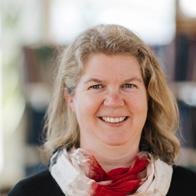
How often has Vivaldi’s Gloria passed through my hands at work! As Carus’s very first publication one of our bestsellers, the masterpiece is omnipresent in our marketing and communication activities. I’m proud that our edition has helped turn this multifaceted composition into Vivaldi’s most popular choral piece. As soon as I read the title, I can hear those unforgettably thrilling opening bars, which are still so fresh even after 300 years. How I would love to join in, especially to celebrate the 350th birthday of the great Baroque master in 2028!
Iris Pfeiffer, responsible for Marketing and Business Development, would like to sing Vivaldi’s Gloria (Carus 40.001/50).

Many years ago, I heard Gottwald’s transcriptions of Mahler’s Rückert-Lieder in an impressive performance by the World Youth Choir at the national conference of the American Choral Directors Association (ACDA). Even earlier I had been captivated by the skill with which Clytus Gottwald, who died recently, made orchestral works and solo songs accessible to vocal ensembles. A must for every a cappella choir!
In 2025, publisher Dr. Johannes Graulich would like to sing transcriptions by Gottwald to celebrate his 100th birthday. www.carus-verlag.com/clytus-gottwald
In most mass compositions, the text that will be celebrated in 2025 is central: The Nicene Creed. At the Council of Nicaea in 325, 1700 years ago, the process of agreeing on a creed was initiated. The final form of the Nicene Creed is the only creed to which all Christian churches around the world refer. Prof. Dr. Stefan Klöckner on the history of its creation and the Creed as an artistic inspiration.
In common usage, the meaning of the word “believe” is simply “I don’t have proof for what I think” (or even “I can’t have proof”). “Believing” something or someone, therefore, is subordinate to our fact-based knowledge. If you truly “know” something, you don’t have to “believe” it anymore. However, the history of Christian belief in God – which rests on the shoulders of Judaism and is inconceivable without its intellectual heritage – speaks a different language: Belief or faith is “the substance of things hoped for, the evidence of things not seen.” That’s how the author of the New Testament letter to the Hebrews (Heb. 11:1) put it around the year 60 AD. Firm conviction – the certainty of belief – thus becomes the supporting foundation of a life lived under God.
Even in the Old Testament, we find various statements that encapsulate the meaning and importance of faith. For example, we find acknowledgements of the one true and only God (“Hear, O Israel: the LORD our God is one LORD”, Deut. 6:4) as well as reminders of God’s divine interventions and his interactions with us humans (“My father was a wandering Aramean ...”, Deut. 26:5).
The early Christians also began to express their faith in statements of confession: a first creed – still written in Greek and then translated into Latin – was formulated around the year 130 AD. It already con-
tains all the essential thoughts of the later Nicene creed: God is the Father and Creator; his only begotten Son, Jesus Christ, came into the world as a human being; he died and rose again to redeem us; the Holy Spirit and the Church are continuing God’s and Jesus’ work of salvation until the Day of Judgement, when all the dead will rise to enjoy eternal life.
In the following centuries, this core text was continually revised and expanded, in particular to counter the various heresies that sprouted up in the early Christian church. To this end, precise statements were formulated about Jesus Christ as a “true God” (Deum verum de Deo vero) and at the same time a “true man”, who lived in a specific historical period (born at the time of King Herod, died during the governorship of Pontius Pilate – sub Pontio Pilato). The statements from the 4th century that Christ was “begotten, not made” (genitum, non factum) and was “consubstantial with the Father” (consubstantialem Patri) were intended to refute the theological teachings of a man called Arius, who rejected the notion of Jesus Christ as an equal part of the divine Trinity. Arius saw the danger that the co-divinity of the Father, the Son and the Holy Spirit could be misunderstood as a belief in three Gods.
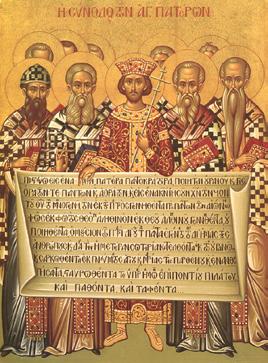
Emperor Constantine unrolls the text of the Niceno-Constantinopolitan
1700 years ago, in 325, an assembly of Christian bishops met in Nicaea (near present-day Istanbul) on the orders of the Roman Emperor Constantine. This was the first major council convened to resolve religious disputes. At this and the subsequent assembly in Constantinople in 381, the bishops rejected the teachings of Arius, formulating the so-called “Niceno-Constantinopolitan” creed. This became official Christian doctrine after it was first proclaimed at the Council of Chalcedon in 451. And it is still valid today!
However, two words in this important and lengthy text served to divide theological opinion. The “East-West” (or Great) Schism” of 1054 saw the Orthodox Church split from its Roman sisters and brothers due to the inclusion (amongst other things) of the word filioque, which implied – to the consternation of Eastern theologians – that the Holy Spirit emanates not only from God the Father, but also from his Son, Jesus Christ. And, to this day, the word “catholic” (et unam sanctam catholicam et apostolicam ecclesiam – I believe in the one holy catholic and apostolic church) is a thorn in the side of Protestant churches, as it is difficult to avoid the misunderstanding that here catholicam refers solely to the Roman Catholic Church. This is clearly not the case if we turn to the original meaning of the Greek word kat’holon, which is comprehensive or general. For this reason, the German-language Protestant version of the Nicene creed contains a slightly different formulation, according to which we believe in the “one, holy, all-encompassing (or: Christian) and apostolic church”.
Anyone looking at the title page of the “Credo” setting in Johann Sebastian Bach’s B-minor Mass will notice the title “Symbolum Nicenum”. In the early Christian church, a statement of faith was referred to as a “symbolum”, referring back to the ancient notion of a symbol as a sign that marks an “insider” from an “outsider”– a ticket, so to speak, that permits entry. In the religious understanding, this means that baptized persons who wish to take part in the Eucharist (the Lord’s Supper) must first profess their Christian faith, making clear that they are “kyriaké”, a Greek word which can be translated as “belonging to the Lord (Christ)”. This term is in fact the origin of the German word for church: “Kirche”.
That’s why reciting or singing the creed during the Sunday service is so fundamental. Whether Catholic and Protestant, it is intoned after the reading of the Holy Scriptures and the sermon, whose aim is to interpret the Scriptures and translate these into contemporary language relevant to modern-day Christians. After the sermon, the members of the congregation respond by affirming their faith.
Since the 14th century, the Credo has been part of the Ordinarium Missae, which is the set of Mass texts whose form and placement in the service never varies: Kyrie – Gloria – Credo –Sanctus (with Benedictus) – Agnus Dei. The Credo settings of the Classical and Romantic periods (e.g. by Mozart, Haydn, Beethoven, Schubert, Gounod, Bruckner and Puccini) are particularly expansive and musically varied due to the length of the creed text. Here the main events of Jesus’ life are usually treated in
different ways: The conception by the Holy Spirit (Et incarnatus est) is often entrusted to soloists and set in a slow, intimate and restrained tonal language, while Christ’s suffering and death (Crucifixus etiam pro nobis) and the resurrection (Et resurrexit tertia die) are realized in a dramatic manner using all available musical means. We also see this in recent musical settings: modern composers still view the Credo as a text that invites artistic exploration. And this also applies to a number of individual settings of the Credo, for example by Antonio Vivaldi or Krzysztof Penderecki.
If today – 1700 years after the creation of the Nicene creed – we intensively study and listen to its settings, then this is perhaps less as an aural manifestation of the Christian faith or an attempt to distinguish “true” religious tenets from false or different beliefs. Instead, the focus today is more on the musical exploration of various urgent questions facing humanity that transcend all religions and denominations, and which have been rendered into sound by composers throughout the ages: Why am I here? What is guilt and what is redemption? What will happen after my death? What does “hope” sound like? The Christian answer to these questions is, on the one hand, a comfort to the human soul, and, on the other, a challenge to the reflective mind ...
Stefan Klöckner
Discover ten settings of the Credo from different eras and styles to celebrate 1700 years of the Christian creed:

Prof. Dr. Stefan Klöckner is Professor for Musicology at the Folkwang University of Arts in Essen, Germany, and a leading expert on Gregorian chant and the history of church music.
The intercultural new composition Credo, initiated by Carus, will be premiered on Friday, September 26, 2025 in famous Cologne Cathedral. The American premiere is going to take place on October 7, 2025 in Bloomington, Indiana. We’d love you and your choir to take part in the celebrations – we’ll be happy to forward a recording of your performance through our communications channels!
Maurice Ravel (1875 – 1937)
L’Aurore op. 45 (fr)
Solo T, Coro SATB, Pic, 2 Fl, 2 Ob, Eh, 2 Clt, 2 Fg, 4 Cor, 2 Tr, 3 Trb, Tb, Timp, Arpa, 2 Vl, Va, Vc, Cb / 6 min ed. Marc Rigaudière
With his composition L’Aurore (Dawn) of 1905, Maurice Ravel made his fifth and final attempt to win the coveted “Prix de Rome” of Paris’s Académie des Beaux-Arts. The fact that he was once again eliminated in the preliminary round caused something of a stir, with the socalled “Ravel affair” triggering a historic scandal and discussions about the jury’s lack of expertise and impartiality.
Despite the strict requirements of the competition, Ravel created a singular and harmonically rich work on the given text by Édouard Guinand, exploiting the timbral possibilities of the orchestra in striking fashion. No heavy demands are placed on the choir. Carus also offers free pronunciation aids for rehearsal.
This first Urtext edition of the work is based on the composer’s autograph score. A vocal score and performance material are also available.
Carus 10.407, full score 28,00 € ( 25,20 €), vocal score 7,50 € (also ), complete orchestral parts for hire (also )
Fanny Hensel (1805 – 1847)
Gartenlieder. Garden Songs
Six songs for mixed choir op. 3 (ger / en) Coro SATB / ed. Lorenz Adamer
The Mendelssohn family cultivated a very special form of house music in their garden cottage on the family estate: the so-called Sonntagsmusiken (Sunday musicales). Perhaps this inspired Fanny Hensel to publish the six songs for mixed choir, collectively entitled Gartenlieder (Garden Songs), op. 3.
Hensel set texts by well-known German Romantic poets such as Eichendorff and Uhland as well as a poem by her husband Wilhelm Hensel. Each creating a wholly different mood, the songs feature recurring motives: Alongside trees, forests and music in the countryside, the idea of listening or eavesdropping is of central importance. The musical texture of the Gartenlieder is generally homophonic and based around wonderful melodies, which are predominantly carried by the soprano voice. With their memorable, varied melodies and colorful harmonies, the Gartenlieder are a veritable treasure trove for choirs.
Carus 9.308, full score 15,00 € ( 13,50 €), choral score ± 7,00 € ( 6,30 €), separate editions available (also )
coming soon 6/2025
Antonín Dvořák (1841 – 1904) Requiem op. 89 (lat)
Soli SATB, Coro SATB, Pic, 2 Fl, 2 Ob, Eh, 2 Clt, BClt, 2 Fg, Cfg, 4 Cor, 2 Tr, 2 Tr di lontano, 3 Trb, Tb, Timp, TamTam, Arpa, Org, 2 Vl, Va, Vc, Cb 95 min / ed. Claudia Seidl
Dvořák’s mighty Requiem was commissioned for Birmingham’s renowned music festival. Since its premiere there in 1891 under the composer’s direction, it has enjoyed huge popularity.
In inimitable style, Dvořák’s Requiem presents a vast emotional spectrum from religious devotion to moments of drama and agonized lamentation, all with a truly impressive depth of expression. The choir plays a central role in the work: with one exception, Dvořák features it in all 13 sections.
The version of the work published by Carus reflects the autograph score, which – unlike the original published score and a copy used at the premiere – precisely reproduces the composer’s careful dynamic markings. Autograph notes from the conducting score have been taken into account, while individual annotations give detailed information about the differences between the sources.
Carus 27.323, full score 109,00 € ( 98,10 €), vocal score 20,00 € (also ), vocal score XL 29,00 €, choral score ± 14,50 €, complete orchestral parts
John Høybye (*1939)
Light Shines in the Darkness Requiem (en/lat)
Coro SSAATTBB, Va solo / 20 min
The Requiem Light Shines in the Darkness is a composition for solo viola and mixed choir. John Høybye has set a text by Edward Broadbridge. The predominantly English-language poem contains Latin passages, in particular from the Requiem Mass, as well as the motto “Lux in tenebris lucet” (Light shines in the darkness). As in the “companion piece” by this creative duo (Psalm 151, Carus 10.113), the string instrument and choir enter into a dialog. Representing light or the voice of God, the viola leads the choir, representing humanity, through the shadow of death.
A Requiem full of beautifully plaintive sounds, but also featuring rousing rhythms that give hope and light in the darkness.
Carus 10.124, full score 39,00 € ( 35,10 €), choral score± , individual part viola solo 7,00 € coming soon
coming soon 5/2025
Grayston (Bill) Ives (*1948)
Requiem (lat)
Solo T, Coro SATB, Fl, Clt, Fg, 2 Cor, 2 Tr, Timp, Perc, Arpa, 2 Vl, Va, Vc, Cb, Org / 45 min
There’s no doubt that British composer Grayston (Bill) Ives has, in various ways, dedicated his career to choral music. A tenor with the legendary King’s Singers, he later worked for 18 years as organist, choirmaster and lecturer at Oxford’s prestigious Magdalen College. This Requiem, which Ives wrote to celebrate the college’s 550th anniversary, is suitable for both sacred and secular performance. Ives’ style is tonal, uncluttered and nonetheless colorful; even, at times, surprising, e.g. in the use of Tibetan hand-held cymbals.
“As a former King’s Singer, ‘Bill’ Ives, steeped in the Anglican choral tradition, writes magnificently .... His word-painting skills draw out every dramatic impulse”, stated the British music magazine Gramophone in 2021 on the occasion of the first recording of this Requiem setting.
Carus 27.325, full score 89,00 € ( 80,10 €), vocal score 24,00 € (also ), choral score± , complete orchestral parts for hire (also )
Stephan Görg (*1968)
Elements
Cycle in Five Movements (en)
Coro SATB (con divisi) / 20 min
Since the time of the ancient Greeks, the four elements of earth, air, fire and water have been regarded as the origin of all life. In his choral cycle Elements for mixed choir SATB (con divisi), Stephan Görg has added love as a fifth element – based on the belief that peaceful coexistence and survival on our planet are only achievable through the power of love.
All movements also available as separate editions.
Carus 9.334, score ± 11,00
Carl Philipp Emanuel Bach (1714 – 1788)
Passions-Cantate (ger)
Soli SATB, Coro SATB, 2 Fl, 2 Ob, 2 Fg, 3 Cor, Timp, 2 Vl, Va, Bc 110 min / ed. Moira Leanne Hill
Carl Philipp Emanuel Bach scored a real hit with his Passion cantata. The work was already so popular during his lifetime that there were public calls for repeat performances every year.
This crowd-pleaser is musically very closely related to Carl Philipp Emanuel Bach’s St. Matthew Passion of 1769. The composer simply reused the majority of the solo movements from the older work, supplemented with new recitatives, a chorale and two choruses. In contemporary fashion, he rejected the biblical text in favor of a poetic version written by Anna Louisa Karsch. And thus the St. Matthew Passion became a Passion cantata. This more modern and perhaps also more accessible genre struck a nerve. Numerous manuscript copies and librettos confirm the work’s popularity far outside the environs of Hamburg.
The score is volume IV,3 of the C.P.E. Bach Complete Edition, edited by Moira Hill for the Packard Humanities Institute in Los Altos (California). Carus publishes the vocal score and choral score for this work. Also available from Carus: the high-quality clothbound full score and orchestral material.
Carus 33.233, full score 82,00 €, vocal score 34,00 € (also ), choral score ± 16,00 €, complete orchestral parts
Masterpieces Arranged for Choir with One Male Voice
Antonio Vivaldi (1678 – 1741)
Gloria in D RV 589 (lat)
Soli SSA, Coro SSAB, Ob, Tr, 2 Vl, Va, Bc 30 min / arr. Christiane Rosiny
The Gloria in D, RV 589, is one of Vivaldi’s best-known sacred works. This Carus edition – which was actually our first ever publication – has certainly made a major contribution to the now enormous popularity of this choral work, which, with its great inventiveness, is typical of the composer’s work (Carus 40.001/50).
Christiane Rosiny’s arrangement of this masterpiece for SSAB choir is aimed at mixed ensembles with a limited number of male voices as well as youth choirs. While soprano and bass remain practically unchanged, the middle voices are arranged for soprano and alto. There are sensible suggestions for cuts should the size of the work prove to be an obstacle. These will help shorten the rehearsal time while preserving the unique character of the individual sections. A vocal score and a choral score are available in addition to the full score. The orchestral parts are taken from the original version.
Carus 14.401, full score 22,00 € ( 19,80 €), vocal score 12,00 € (also ), choral score ± 8,00 €, complete orchestral parts 74,00 €
Felix Mendelssohn Bartholdy (1809 – 1847)
Vom Himmel hoch. From Heav’n on High MWV A 10 (ger / en)
Cantata Based on Luther’s Christmas Chorale. Arrangement for Chamber Orchestra
Soli SBar, Coro SSATB, 2 Vl, Va, Vc/Cb, Fl, Ob, Clt, Fg, Cor, Tr, Timp 16 min / arr. Urs Stäuble
Mendelssohn’s popular Christmas cantata on the Lutheran festive hymn “Vom Himmel hoch” (From heav’n on high) is available here in a chamber version, reduced to six wind instruments, string quintet and timpani. This means that the work can also be performed by smaller choirs, as well as choirs with more limited resources. The choir can use the vocal score and/or choral score of the original version.
Carus 40.189/50, full score 59,00 € ( 53,10 €), vocal score 14,50 €, vocal score XL 22,00 €, choral score ± 5,50 €, complete orchestral parts for hire (also )
Antonín Dvořák (1841 – 1904)
Te Deum op. 103 (lat)
Arrangement for chamber orchestra
Soli SB, Coro SATB, Fl, Ob (also Eh), Clt, Fg, Cor, Tr, Trb, Timp, Perc, 2 Vl, Va, Vc, Cb / 20 min arr. Joachim Linkelmann
In 1892, Dvořák was honored to receive a commission from New York to compose a festive cantata to mark the 400th anniversary of Christopher Columbus’s discovery of America. Within a short space of time, he had composed his impressive Te Deum, which in four contrasting sections joyfully interprets the ancient hymn of praise.
This version by the experienced arranger and orchestral musician Joachim Linckelmann enables smaller ensembles to perform the work. In his edition for soloists, choir and chamber orchestra, he reduces the winds from the original 18 to just 7. The string parts are identical to the original score, although these can also be reduced in size if required. The vocal parts (soloists and choir) are completely unchanged, so that the singers can also use the vocal scores and choral scores from the Carus Urtext edition.
Carus 27.189/50, full score 59,00 € ( 53,10 €), vocal score 13,00 €, choral score ± 6,95 €, complete orchestral parts for hire (also )
Anton Bruckner (1824 – 1896)
Mass in F minor WAB 28 (lat)
Arrangement for chamber orchestra
Soli SATB, Coro SATB, Fl, Ob, Clt, Fg, Cor, Tr, Trb, Timp, 2 Vl, Va, Vc, Cb 60 min / arr. Joachim Linckelmann
Bruckner’s mighty Mass in F minor is one of the composer’s most important works, and indeed one of the major pieces of 19th century choral music. In unique fashion, the composer manages to illuminate the religious text through his music. At the same time, he creates passages of extreme emotion, which in fact led to disagreements with the musicians in the run up to the originally planned premiere in November 1868. In subsequent years, however, the work gained in popularity. Today it is still a highly appealing challenge for well-trained choirs.
With this version by the experienced arranger and orchestral musician Joachim Linckelmann, the Mass can now be performed by smaller groups. Created for soloists, choir and chamber orchestra, he reduces the winds from the original 15 to just seven. The string parts are identical to the original but can now also be reduced in number. The vocal parts (solos and choir) are entirely unaltered, so that the singers can use the vocal scores and choral scores of the Carus Urtext edition.
Carus 27.094/50, full score 125,00 € ( 112,50 €), vocal score 19,95 €, vocal score XL 37,95 €, choral score ± 11,95 €, complete orchestral parts for hire (also )
Josef Gabriel Rheinberger (1839 – 1901) Der Stern von Bethlehem. The Star of Bethlehem op. 164 (ger)
Arrangement for choir and organ
Soli SB, Coro SATB, Org / 48 min arr. Birger Petersen
Rheinberger’s large-scale Christmas cantata Der Stern von Bethlehem (The Star of Bethlehem) is one of the composer’s most popular and best-known works. It retells the Christmas story in nine lyrical scenes – from the angels’ glad tidings and the shepherds at the manger to the journey of the three Wise Men from the East.
To make this poetic, colorful and (in the best sense of the word) “romantic” work accessible to even more vocal ensembles, the arranger Birger Petersen has created an arrangement for soloists, choir and organ. The cantata can thus now be performed by smaller choirs in concert or within a church service, either in its entirety or in excerpts. The choir can use the vocal score and choral score from the orchestral version. While this new arrangement can be played on a two-manual organ with pedalboard, larger instruments with richer registrations are recommended.
Carus 50.164/45, full score 79,00 € ( 71,10 €), vocal score 22,00 € (also ), choral score ± 12,50 €, / Carus Choir Coach (Audio only) practice aid
Josef Gabriel Rheinberger (1839 – 1901)
Sacred choral works without opus numbers (lat / ger)
Coro SATB, partly Org / Pfte ed. Barbara Mohn
In March 1855, shortly before his 16th birthday, Josef Gabriel Rheinberger composed one of his most successful pieces, the Abendlied, op. 69/3. Yet it was to be another 18 years before he published this early masterpiece. In fact, Rheinberger left most of his youthful works to gather dust, including symphonic works, chamber music, songs, operas and choral works. This new volume, which spotlights the composer’s unique qualities, presents a selection of sacred works for choir with organ or a cappella drawn from this large part of Rheinberger’s oeuvre.
There are many exciting discoveries to be made, including carefully crafted liturgical works of great beauty and displaying skilled polyphonic writing, a sacred cantata as well as an early version of the Abendlied. All pieces are now available for the first time in critical editions. The centerpiece of the collection is the fourpart Mass in E flat major, JWV 57, which Rheinberger composed in 1856. The volume also features a series of works without opus numbers from Rheinberger’s time as a highly respected professor of counterpoint in Munich, including pieces written for his students and the Bavarian Court Chapel as well as more modest works for church choir.
Carus 50.300, full score 59,00 € ( 53,10 €) separate editions available (also )
Carl Maria von Weber (1786 – 1826)
Missa sancta No. 2. Jubel-Messe (Jubilation Mass) WeV A.5 (lat)
Soli SATB, Coro SATB, 2 Fl, 2 Ob, 2 Clt, 2 Fg, 4 Cor, 2 Tr, Timp, 2 Vl, Va, Vc, Cb 26 min / ed. Frank Höndgen
As Kapellmeister at Dresden’s royal theater, Carl Maria von Weber’s primary task was to establish a German opera. However, it was also part of his duties to take care of church music every three weeks. This assignment was gladly accepted by the opera composer Weber, who regarded his artistic talents as a “gift from heaven”. His Missa sancta No. 2, also known as the “Jubel-Messe” (Jubilation Mass), was composed for the service held to celebrate the golden wedding anniversary of the Saxon royal couple Friedrich August I (1750-1827) and Marie Amalie Auguste (1752-1828) in January 1819.
Due to its relative brevity, the Mass is also well suited for inclusion in a liturgical framework today. The vocal parts in this Mass can easily be mastered by amateur choirs for festive occasions in church or in concert.
Carus 27.902, full score 79,00 € ( 71,10 €), vocal score 22,00 € (also ), choral score ± 11,00 €, complete orchestral parts 205,00 €
Heinrich Kaminski (1886 – 1946)
Die Messe deutsch. O wirre Welt (Oh world confounded!) (ger) Soli SS, Coro SSATB / 11 min ed. Barbara Grossmann
“O wirre Welt!” (Oh world confounded!) This is how Heinrich Kaminski’s selfpenned Kyrie text opens his a cappella Mass. Composed in 1934 as a reaction to the Nazi’s seizure of power, the work remained unfinished. Under the oppressive regime, Kaminski simply could not find the words for a German paraphrase of the Latin plea for peace on earth: “et in terra pax”. On several occasions the composer fled to Switzerland to escape Nazi brutality. His music is a cry of despair and a call for God’s mercy on the eve of the Second World War as well as a personal response to the inhumanity and godlessness of his time. Like a beacon we hear the Gloria in praise of God.
Although the Mass was left unfinished, it offers a complete Kyrie with a Gloria call and thus can be performed both as a protest against hatred and ignorance and, of course, a plea for love and hope.
Carus 70.703, full score 24,00 €, choral score ± 19,00 € ( 17,10 €)
Giacomo Puccini (1858 – 1924)
Arias and Instrumental Movements from Operas in Arrangements for Chamber Orchestra arr. Andreas Gies
Giacomo Puccini’s operas are largely through-composed. Only occasionally does the master of verismo slacken the pace to indulge himself with an aria. The undeniable highlights of his operas, these arias are often performed in concert.
The Italian conductor Andreas Gies has arranged Puccini’s best-known arias and duets for reduced wind ensemble, enabling these to be performed in smaller settings. While the string section can also be reduced in size, a sufficient number of players is needed to perform the many divisi.
Carus 56.251 ff., full scores (also ), complete orchestral parts for hire (also )
Johann Adolf Hasse (1699 – 1783)
Arias and Instrumental Movements from the Operas Cleofide and Marc’Antonio e Cleopatra by Hasse
A selected edition of Johann Adolf Hasse’s works has been published by Carus since 1999. We now offer the most beautiful arias and instrumental movements from his Operas Cleofide and Marc’Antonio e Cleopatra as separate editions, either with complete performance material.
Carus 50.771 ff., full scores (also ), complete orchestral parts for hire (also )
Giacomo Puccini (1858 – 1924)
Composizioni per pianoforte
Edizione Nazionale delle Opere di Giacomo Puccini, II / 2.2 ed. Virgilio Bernardoni
Puccini as a creator of piano music? This volume invites you to discover this still largely unknown side of the composer. Many previously unpublished works are available here for the first time. In fact, Puccini regularly wrote piano pieces throughout his career. The volume opens with one of the first compositions he preserved: a short, almost childlike work (Pezzo in Sol maggiore). This is followed by other piano pieces, some combined into cycles. These works shed an interesting light on Puccini’s earliest days as a composer and allow us to follow his burgeoning skills. The later pieces are mostly occasional works, written alongside the great operas.
Browsing through the pages, one stumbles across many strokes of genius: For instance, when the melody wends its way to its climax before immediately sinking back to nothingness (Adagio in La maggiore, SC 31); or when, condensed to a mere 16 measures, the melody floats in melancholy fashion within a harmonic structure that avoids its tonal center until just before the end (Calmo e molto lento, SC 86, from 1916). It’s well worth discovering this little-known side of Puccini!
Carus 56.004, full score 99,00 € ( 89,10 €)
Max Reger (1873 – 1916)
Edition of Works, Vol. II / 10: Works for Male Voice Choir / Women’s or Children’s Choir (ger)
ed. Christopher Grafschmidt / Claudia Seidl
This volume contains all of Reger’s compositions for a cappella male-voice and female-voice choir and (with piano accompaniment) children’s choir. By far the largest number are for male-voice choir. The works for female voices are composed in three to five parts. The three movements for one or two-part children’s choir are the only pieces to feature piano accompaniment. Even if the compositions for female voices and especially children’s choir can rather be categorized as ‘occasional works’, they are well worth discovering.
Carus 52.817, full score 229,00 €
Edition of Works, Vol. II / 5: Songs V (1906–1916)
ed. Knud Breyer / Stefan König
This volume comprises the songs composed between June 1906 and May 1915 as well as the vocal scores of the orchestral songs An die Hoffnung (To hope) op. 124, and Hymnus der Liebe (Hymn of love) op. 136. Alongside additional songs from Schlichte Weisen (Simple ways) op. 76 (Volumes III – VI), this new volume features occasional and commissioned works
Carus 52.812, full score 289,00 €
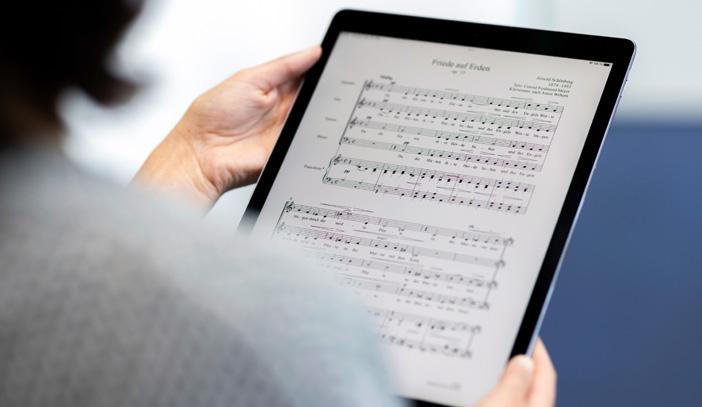
For some time now full scores, separate editions from choral collections, choral leaflets, and sets of instrumental parts of Bach’s cantatas, masses and oratorios have all been available from Carus in digital format. The same minimum order quantities apply to digital choral editions as to printed editions, while our bulk prices for digital choral editions (depending on numbers ordered) are particularly attractive.
And now in response to more and more requests from our customers, we’ve also started to offer our vocal scores in digital format. This means that choral singers who prefer to sing from a tablet rather than from printed sheet music now have a legal option available to them. Although digital vocal scores aren’t yet available for every one of Carus’ 850 works with vocal scores, we’re working constantly to expand our offering.
Your purchase of digital sheet music contributes to the fair remuneration of all creatives who have made these editions possible.

Carus Vocal Scores
• Reliable editions based on Urtext
• Easily playable keyboard accompaniments
• Includes indications of instrumentation